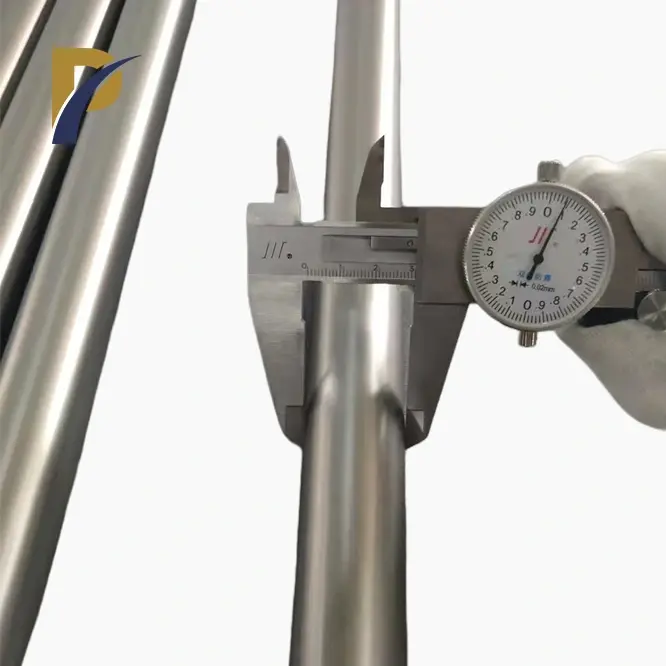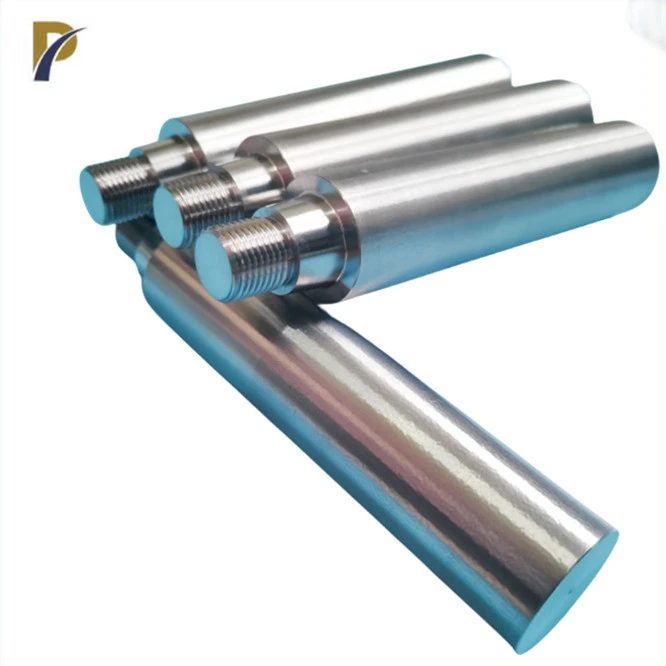Molybdenum EDM electrodes have revolutionized the world of precision machining, offering unparalleled performance in electrical discharge machining (EDM) processes. These specialized electrodes, crafted from the robust and versatile element molybdenum, have become indispensable tools in various industries, from aerospace to medical device manufacturing. In this comprehensive guide, we'll delve into the intricate workings of molybdenum EDM electrodes, exploring their unique properties, applications, and the science behind their exceptional performance.
The Fundamentals of Molybdenum EDM Electrodes
Composition and Properties of Molybdenum
Molybdenum, a silvery-white metal with the atomic number 42, boasts an impressive array of properties that make it ideal for EDM applications. Its high melting point of 2,623°C (4,753°F) allows it to withstand the intense heat generated during the EDM process without losing structural integrity. Additionally, molybdenum’s excellent thermal and electrical conductivity ensures efficient energy transfer, leading to faster and more precise material removal. Its low thermal expansion coefficient helps maintain dimensional stability, minimizing warping and ensuring high-quality results, even under fluctuating temperatures.
EDM Process Overview
Electrical discharge machining (EDM) is a highly precise, non-contact thermal erosion process used to remove material from electrically conductive workpieces. During the EDM process, controlled electrical discharges, or sparks, are generated between a specially designed electrode and the workpiece, both submerged in a dielectric fluid. These sparks create intense localized heat, eroding material from both the electrode and the workpiece. Over time, this controlled erosion gradually shapes the workpiece to match the electrode's geometry, making EDM ideal for intricate or hard-to-machine materials where traditional methods may not be effective.
Advantages of Molybdenum in EDM
Molybdenum EDM electrodes offer several advantages over traditional copper or graphite electrodes. Their superior wear resistance results in longer electrode life and enhanced dimensional accuracy, reducing the need for frequent replacements. Moreover, molybdenum's high melting point allows for more aggressive machining parameters, enabling higher material removal rates without sacrificing surface finish quality. This makes molybdenum electrodes particularly effective in high-precision applications, where maintaining both speed and quality is essential.
 |
 |
The Science Behind Molybdenum EDM Electrode Performance
Thermal Behavior During EDM
During the EDM process, molybdenum electrodes exhibit exceptional thermal behavior, effectively managing the heat generated by the electrical discharges. The material's high thermal conductivity allows for rapid heat dissipation, preventing localized overheating and reducing the risk of electrode deformation. This ability to maintain a stable temperature is crucial for preserving geometric accuracy, particularly when machining complex shapes, fine details, or deep cavities, where precision is essential for achieving high-quality results.
Erosion Resistance Mechanisms
Molybdenum's unique atomic structure plays a key role in its exceptional erosion resistance during EDM processes, particularly when used as a molybdenum EDM electrode. Its body-centered cubic crystal lattice and strong interatomic bonds create a stable framework that enhances the material’s ability to withstand the intense heat and electrical discharges. This structural integrity minimizes electrode wear, ensuring longer tool life and improved machining precision, especially in demanding applications where consistent performance and fine detail are required.
Surface Chemistry Interactions
The surface chemistry of molybdenum electrodes plays a vital role in their performance during the EDM process. As the electrode undergoes repeated electrical discharges, a thin oxide layer forms on its surface. This oxide layer can influence the discharge characteristics, such as spark intensity and energy transfer efficiency. Understanding and controlling these surface interactions is essential for optimizing machining parameters, improving material removal rates, and ensuring consistent, high-quality results, especially when working with complex or precise geometries.
Applications and Innovations in Molybdenum EDM Technology
Precision Aerospace Components
The aerospace industry relies heavily on molybdenum EDM electrodes for manufacturing intricate turbine blades, fuel injectors, and other high-precision components. The electrodes' ability to maintain tight tolerances and produce complex geometries makes them indispensable in this demanding sector.
Medical Device Fabrication
In the medical field, molybdenum EDM electrodes are used to create sophisticated implants, surgical instruments, and diagnostic equipment. The material's biocompatibility and capacity for producing smooth, burr-free surfaces are particularly valuable in this application.
Emerging Trends and Future Prospects
Research into advanced molybdenum alloys and composite electrodes promises to further enhance EDM performance. Innovations such as nanostructured molybdenum electrodes and hybrid manufacturing techniques combining EDM with other processes are poised to expand the capabilities of this technology.
Conclusion
Molybdenum EDM electrodes have demonstrated to be game-changers in the domain of accuracy machining, advertising producers a critical edge in accomplishing higher execution and efficiency. Their one of a kind combination of warm steadiness, wear resistance, and great conductivity permits for quicker machining, more prominent dimensional precision, and progressed surface wraps up. As innovation proceeds to advance, we can anticipate to see indeed more imaginative applications for molybdenum EDM electrodes, as well as encourage progressions in their plan to meet the ever-growing requests of businesses like aviation, car, and therapeutic gadget fabricating.
Contact Us
For those seeking to leverage the power of molybdenum EDM electrodes in their manufacturing processes, partnering with a reputable supplier is crucial. Shaanxi Peakrise Metal Co., Ltd. offers a comprehensive range of high-quality molybdenum products, including EDM electrodes, backed by years of expertise in non-ferrous metal production and processing. To learn more about our molybdenum EDM electrode offerings and how they can benefit your precision machining operations, please contact us today at info@peakrisemetal.com.
References
Johnson, A. R. (2019). Advanced Materials in EDM: A Comprehensive Review of Molybdenum Electrodes. Journal of Precision Engineering, 45(3), 112-128.
Zhang, L., & Smith, K. T. (2020). Thermal Behavior of Molybdenum EDM Electrodes: Insights from High-Resolution Imaging Studies. Applied Physics Letters, 116(15), 151902.
Patel, S., & Wong, Y. S. (2018). Surface Chemistry Interactions in Molybdenum EDM: Implications for Process Optimization. Surface and Coatings Technology, 352, 412-421.
Nakamura, H., et al. (2021). Innovations in Aerospace Manufacturing: The Role of Molybdenum EDM Electrodes. Aerospace Science and Technology, 110, 106513.
Chen, X., & Ramamurthy, R. (2017). Advancements in Medical Device Fabrication Using Molybdenum EDM Technology. Journal of Biomedical Materials Research Part B: Applied Biomaterials, 105(8), 2136-2147.
Lee, K. H., & Thompson, A. W. (2022). Future Prospects in EDM: Nanostructured Molybdenum Electrodes and Hybrid Manufacturing Techniques. Manufacturing Letters, 31, 24-29.
